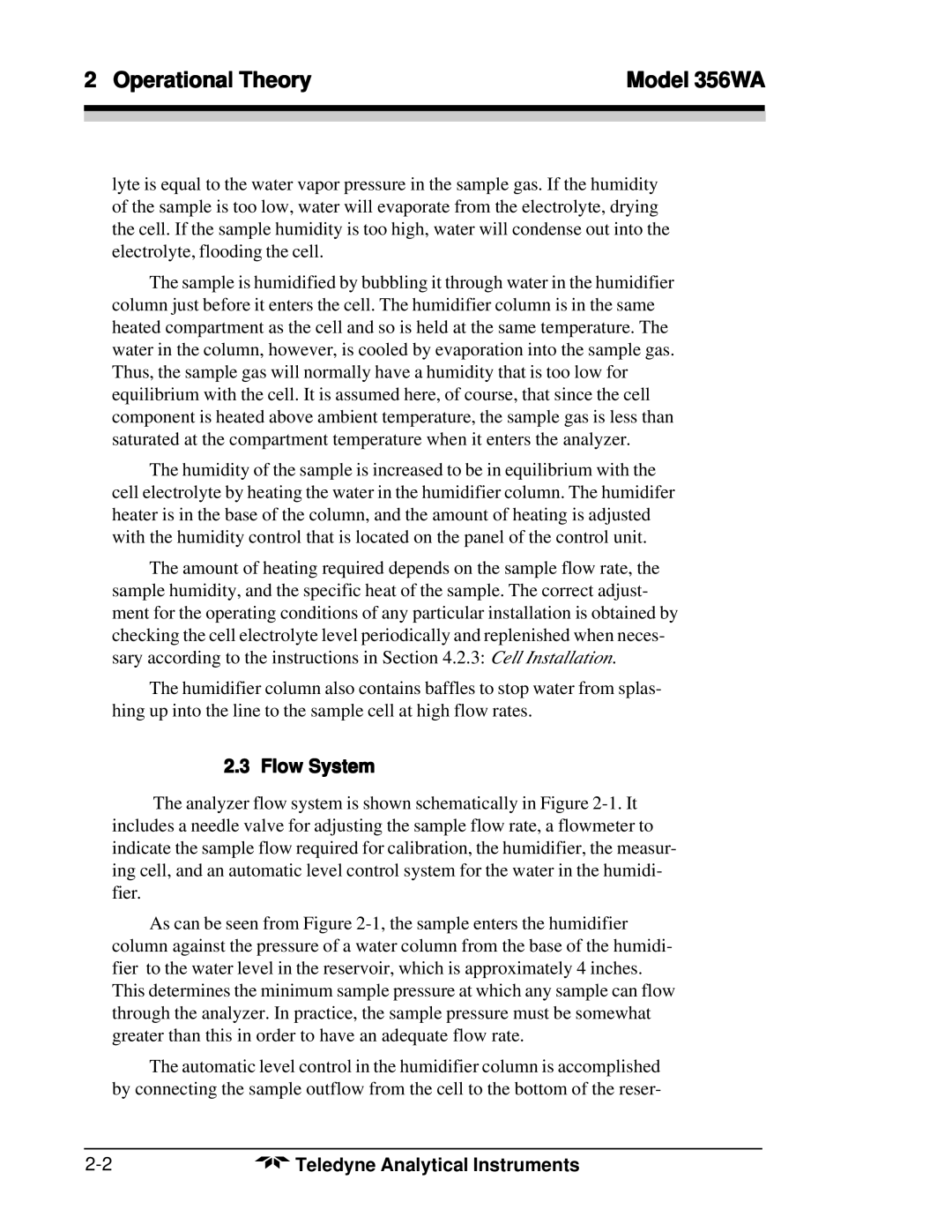
2 Operational Theory | Model 356WA |
|
|
|
|
lyte is equal to the water vapor pressure in the sample gas. If the humidity of the sample is too low, water will evaporate from the electrolyte, drying the cell. If the sample humidity is too high, water will condense out into the electrolyte, flooding the cell.
The sample is humidified by bubbling it through water in the humidifier column just before it enters the cell. The humidifier column is in the same heated compartment as the cell and so is held at the same temperature. The water in the column, however, is cooled by evaporation into the sample gas. Thus, the sample gas will normally have a humidity that is too low for equilibrium with the cell. It is assumed here, of course, that since the cell component is heated above ambient temperature, the sample gas is less than saturated at the compartment temperature when it enters the analyzer.
The humidity of the sample is increased to be in equilibrium with the cell electrolyte by heating the water in the humidifier column. The humidifer heater is in the base of the column, and the amount of heating is adjusted with the humidity control that is located on the panel of the control unit.
The amount of heating required depends on the sample flow rate, the sample humidity, and the specific heat of the sample. The correct adjust- ment for the operating conditions of any particular installation is obtained by checking the cell electrolyte level periodically and replenished when neces- sary according to the instructions in Section 4.2.3: Cell Installation.
The humidifier column also contains baffles to stop water from splas- hing up into the line to the sample cell at high flow rates.
2.3 Flow System
The analyzer flow system is shown schematically in Figure
As can be seen from Figure
The automatic level control in the humidifier column is accomplished by connecting the sample outflow from the cell to the bottom of the reser-
Teledyne Analytical Instruments |
